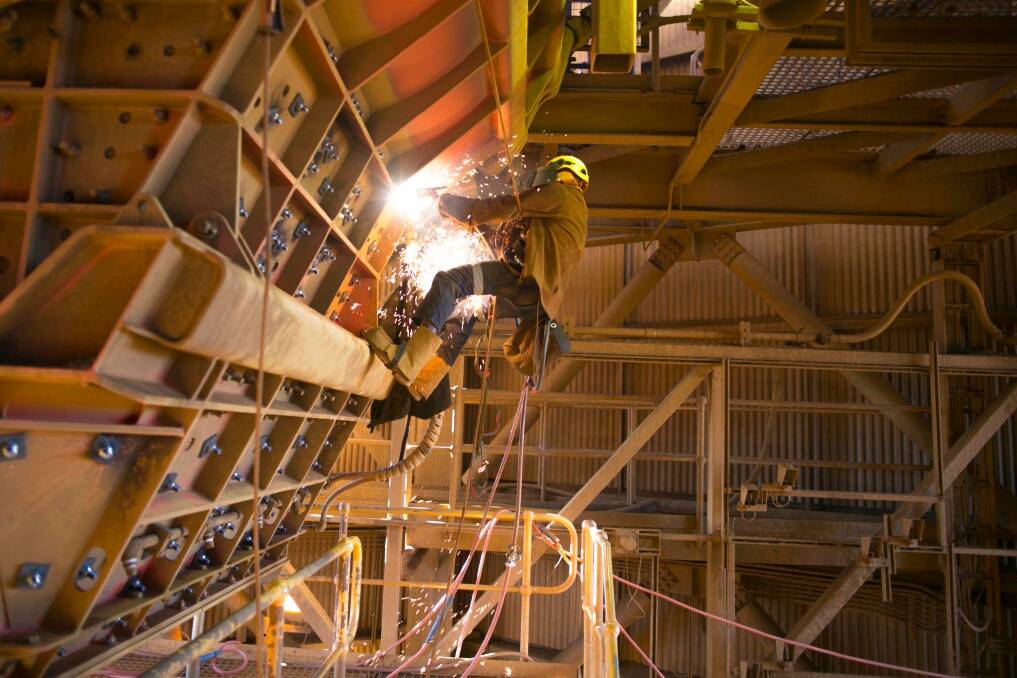How do the sustainable development goals factor into industry 4.0?

This is branded content.
Although the COVID-19 pandemic well and truly prompted an unexpectidly rapid shift in the speed at which Industry 4.0 technologies were rolled out across all global industries, there's no denying that this next wave of (digital) industrial development has been on the horizon for quite some time.
Industry 4.0 technologies have found their footholds in a wide variety of Australian industries as well, ranging from mining and fabrication to the agricultural sector, with some economic analysts asserting that the digital shift couldn't have come at a better time.
Australia's post-COVID economy is better prepared now than ever before to address not just climate concerns, but also wider concerns represented by the United Nations' 17 Sustainable Development Goals.
How does Industry 4.0 factor into the SDGs? We'll be exploring the answer to this question in-depth today.
Evolving industry processes to mitigate ecological concerns
The potential of Industry 4.0 technologies to address long-standing ecological concerns can be best observed in the Australian mining industry, where smart mining technology is actively being used to limit the environmental impacts of open-pit or subsurface mineral extraction.
Using sensors to detect carbon levels and other factors like soil compaction alongside software equipped with artificial intelligence capabilities, smart mining technologies are able to develop optimal extraction strategies and methodologies for individual sites, allowing site workers to yield the best possible results with minimal environmental impact.
Similar technologies have been used in the agricultural and animal agricultural industries to minimise risks of soil compaction and measure the impacts that factors like livestock or excessive use of farming equipment can hold on soil carbon levels.
There has also been recent debate about the potential that this technology holds in measuring and potentially even mitigating environmental damage caused by flooding, an issue that is still plaguing farmers across Queensland and New South Wales.
Limiting unnecessary resource consumption
Improving industry processes can have a plethora of positive impacts, not just for the environment nor that particular industry and its many workers, but also for the Australian economy as a whole.
Whilst the construct of the 'circular economy' isn't entirely feasible for the majority of Australia's major exporting industries to adopt at this point in time, there has been a strong shift towards re-evaluating resource consumption across select industries, including fabrication, construction, and mining.
Sustainable consumption can be achieved through the use of Industry 4.0 technologies like smart industrial printers and other intelligent fabrication tools. These tools are essentially designed to identify the best possible production strategies, these being approaches that require the least amount of energy and resources in order to produce the best possible output.
Incorporating smart fabrication tools in Australian industries will naturally allow for those industries to drastically reduce their resource consumption, simplify their waste management processes, and ensure that they are one step closer to cultivating their own circular economy.
Improving work environments for industry workers
The Sustainable Development Goals isn't just about mitigating the negative impacts of climate change and promoting conscientious consumption. There are human and animal welfare elements to the SDGs as well, and Industry 4.0 technologies are forecasted to play a role in ensuring that these elements are addressed as the digitalisation of industries continues.
Goal 9 of the SDGs revolves around sustainable industrialisation, which includes ensuring that industries possess all the infrastructure, information, and developed organisational processes that they need to keep their workplaces as safe, secure, and sustainable as possible.
Industry 4.0 technologies have already played a vital role in the development of industry infrastructure, including intelligent machinery with machine learning capabilities, and even protective equipment to keep workers safe over the foreseeable future.
Although improving work environments isn't a major concern in developed nations which already possess a wealth of digital resources required to develop industrial infrastructure and processes, developing countries can definitely benefit from accessing and implementing these technologies across their own national industries.
Developing additional employment opportunities
Finally, although Industry 4.0 technologies undoubtedly hold major potential for introducing automation to virtually all the Australian industries that we've looked at today, the technologies are also likely to help develop future employment opportunities across the length of industrial production chains.
Building employment rates is another element of the UN's SDGs, as is ensuring that education rates across the world continue to climb. Professionals with technical skills and capabilities to operate smart technologies will be increasingly in demand as industries incorporate more and more sophisticated tech into their processes.
Modern communications technologies may also make it possible for professionals to work remotely alongside on-site workers. For example, if any machinery is ever malfunctioning or performing suboptimally, on-site workers can request support from off-site engineers, mechanics, and other professionals in order to rectify problems by accessing software remotely.
On-site workers also have the opportunity to strengthen their own technical skills by learning how to use sophisticated Industry 4.0 technologies on the job or through training programmes.
Encouraging industry workers like factory floor staff, miners, and even farmers to get to grips with Industry 4.0 technologies will naturally elevate the technical skills of the Australian workforce as a whole, solidifying Australia's place as a present and ongoing titan of global industry.
~
It's worth noting that Industry 4.0 technologies are still being developed for a myriad of industries, even if we can see them being rolled out in Australia's major export industries. With this in mind, it's likely that we'll continue to see Industry 4.0 technologies emerge that are increasingly aligned with the 17 Sustainable Development Goals over the coming years.
In the meantime, Australians can prepare for ongoing industrial digital development by taking steps to understand Industry 4.0 and the positive impacts it may yield for both their professional and personal lives, and continuing the discussion in their homes, schools, and workplaces.


